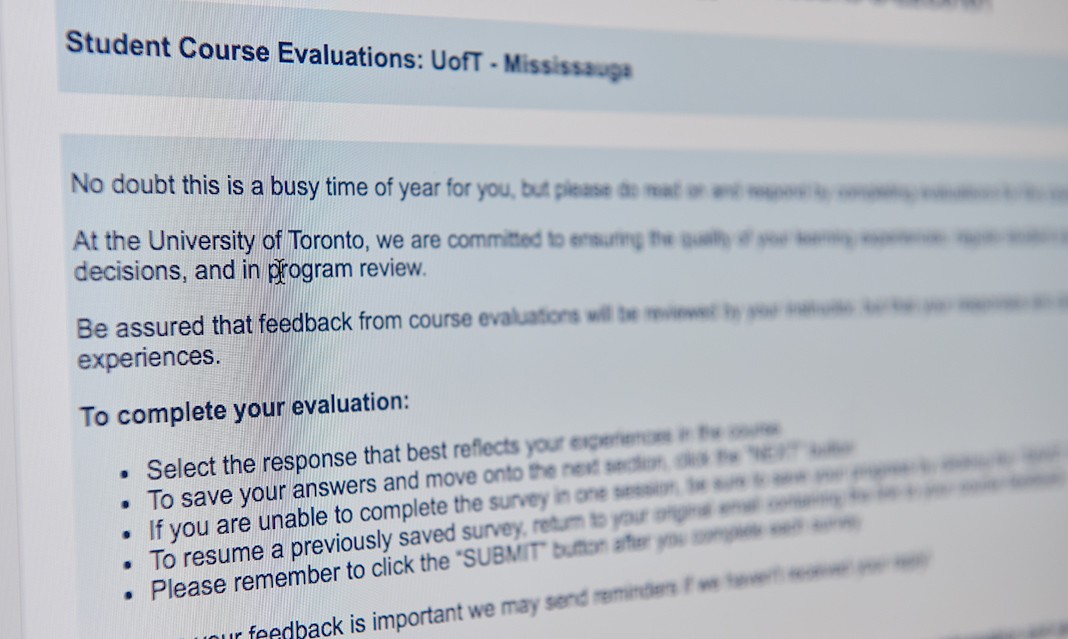With the academic year coming to an end, it’s once again time for course evaluations. All UTM students registered in any classes are invited to submit course evaluations and the feedback is made available to professors. Most students are aware of the existence of course evaluations, but of the logistics are not clear.
Professor Susan McCahan is the VP innovations in undergraduate education and the chair of First Year for the Faculty of Applied Science and Engineering, at the Centre for Teaching Support and Innovation. According to McCahan, professors have access to all the feedback they receive.
McCahan clarified the process of course evaluations, saying that about four weeks before the end of the semester, instructors receive an email and a window opens alerting them that course evaluations will start soon. Professors are given the option of adding an instructor-selected question from an item bank that contains over 200 validated items. They have two weeks to do this.
After it closes, a student window opens, typically starting from the last couple of weeks of the semester and going into the study period, always ending before exams begin. This is when students fill in course evaluations online after they are sent a notification via email. Once the student window closes, the office begins processing the collected data, but the results are not released to faculty members until grades are finalized, submitted, and approved.
Then the instructor receives a visual report of evaluations that includes the means on different questions, standard deviations, visual histograms, qualitative comments, and so on. The report is quite extensive and contains a substantial amount of feedback.
With regards to whether it is mandatory for professors to examine the feedback given by students, McCahan expressed that of course, there is no way to ensure that professors look at the feedback given by students. However, the reports are not only provided to individual instructors, but also the chairs of the departments. The department chairs use the reports as a contributing factor to the processes that occur within a department, such as the annual review of faculty members, promotion, tenure, and pay increases.
When asked about how many students fill out course evaluations, McCahan said that it varies across all of the projects, referring to the clusters of courses that are evaluated in the same window (UTM undergrads form one project in the fall term). Response rates vary from 33 to 90 percent.
In addition to McCahan, professor Daniela Janes of the English and drama department provided insight with regards to how course evaluations are of use to professors, saying that course evaluations help professors further understand students’ experiences in the classroom and aid professors in reflecting on pedagogical practices. Janes expressed that the “comments” section of the course evaluations was particularly valuable to her, because it allowed students to express “a more anecdotal and personal response to the course materials and the teaching approach”.
With regards to implementing changes from feedback into her new courses, she affirmed that she did so. For example, Janes added a writing assignment to a class in which she had received feedback asking for more writing opportunities and also removed a book from a course that was quite heavy on reading.
Despite the low completion rate of course evaluations, it’s clear that student voices are being heard and that feedback is being used by the faculty. There are still a few days left for this year’s course evaluations. Whether you choose to complete them or not, one thing is certain: your email will be clogged with reminders asking you to do so.



